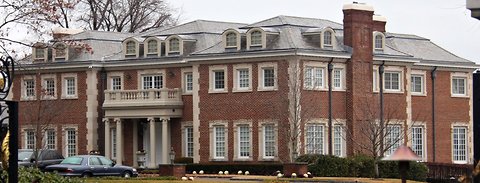While the changes could make it easier for the Fed to move ahead with another round of asset purchases later this year, by helping to explain why the economy needs additional stimulus, officials have indicated that any such plans remain on the back burner, and may stay there so long as the economy continues to recover.
Indeed, the Fed is able to focus on communication in part because it is no longer devoting all of its energies to crisis management. These are improvements that the Fed’s chairman, Ben S. Bernanke, has waited five years to make, reflecting his vision for how the Fed should operate in periods of calm, too.
The centerpiece of the new policies is a plan to publish the predictions of senior Fed officials about the level at which they intend to set short-term interest rates over the next three years — including when they expect to end their three-year-old commitment to keep rates near zero. The Fed also will describe the expectations of those officials for the management of the central bank’s vast investment portfolio.
The first forecast will be published after a two-day meeting, starting on Tuesday, of the Federal Open Market Committee, which sets policy for the central bank. The committee also is considering the publication of a statement describing the Fed’s goals for the pace of inflation and level of unemployment, which it has never formalized.
“Our moves toward greater openness in recent years have made our policies more effective and helped the public understand the Fed’s actions better,” John C. Williams, president of the Federal Reserve Bank of San Francisco, said in a recent speech.
Any bolder steps, he said, “will depend on how economic conditions develop.”
This is not the first time the Fed has tried to get past crisis management. And after several false starts in which it overestimated the strength of the recovery, officials have been careful to insist that they still stand ready to do more if necessary.
The economy, after all, is merely muddling along. While economists calculate that fourth-quarter growth was relatively strong, most forecasters expect a much slower pace of growth in the new year. The Fed’s own forecast, which will be updated Wednesday, anticipates growth of up to 2.9 percent. Most other guesses are lower.
Unemployment also remains a deep and prevalent affliction. Almost 24 million Americans could not find full-time work in December; the unemployment rate has ticked downward in part because many people have stopped looking for work.
Senior Fed officials have also sought to focus attention in recent months on the depressed condition of the housing market, arguing that other parts of the government can and should do more to help homeowners and revive sales. Some Fed officials have advocated that the Fed buy large quantities of mortgage-backed securities, which could further reduce interest rates on mortgage loans.
But several Fed officials have said in recent speeches that they are hesitant to support new efforts to improve growth, because they think monetary policy has exhausted most of its power, and because they are worried about inflation.
“Steady even if unspectacular growth accompanied by inflation in the neighborhood of 2 percent justifies some reluctance to change, in either direction, the F.O.M.C.’s accommodative policy,” Dennis P. Lockhart, president of the Federal Reserve Bank of Atlanta, said in a speech this month.
Mr. Lockhart added a standard caveat for Fed officials, that the persistence of high unemployment required the Fed to keep thinking about doing more.
“Now is not a time to lock into a rigid position,” he said.
But Fed officials have made clear that high unemployment is an insufficient cause for additional action, at least as long as inflation remains near 2 percent.
Sandra Pianalto, president of the Federal Reserve Bank of Cleveland, said in a recent speech that the economy would not create enough jobs to return unemployment to normal levels for “perhaps even four or five years.”
“Sooner, of course, would be better for everyone,” she said. “But I want to be on a path toward full employment that
doesn’t create an inflation problem down the road.”
The communications changes that the Fed plans to announce Wednesday mark the furthest advance in a 20-year-old campaign to increase the transparency of its decision-making as a means to increase the impact of its policies. As recently as the early 1990s, the Fed still did not regularly announce the decisions reached at its policy meetings. Now it plans to start publishing predictions about the outcomes of future meetings to guide investor expectations.
The Fed disclosed its plans this month when it released a description of the committee’s most recent meeting, in December. On Friday it followed up by releasing the templates that will be used to publish the predictions.
The predictions themselves could have a mild effect on markets. The Fed said this summer that it would maintain short-term rates near zero through middle of 2013, at least. Mr. Bernanke has since underscored the words “at least,” and analysts expect the forecast will show that most members of the committee intend to hold rates near zero into 2014.
Pushing back that timetable will tend to reduce interest rates, but the impact is likely to be minor, as asset prices already reflect an expectation that rates will not rise before 2014.
“In policy terms, this is a historic change,” Paul Ashworth, chief North American economist at Capital Economics, wrote in a note to clients. “In practical terms, however, the change isn’t going to have any major impact.”
Article source: http://feeds.nytimes.com/click.phdo?i=26cb1f7aa08ec27f1f256f311fb2e63e

